 Under Construction!
Under Construction!
Sacred Cove, Abalone Cove Shoreline Park, Rancho Palos Verdes, Los Angeles Co., CA, March 4, 2022
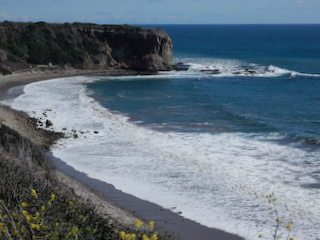
-
| 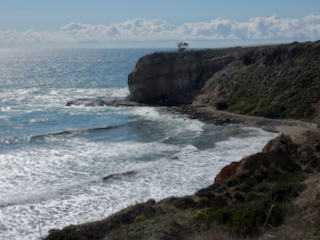
-
| 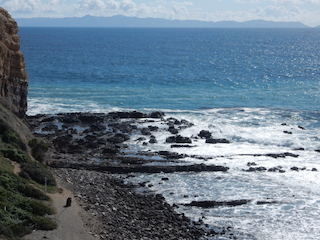
-
|
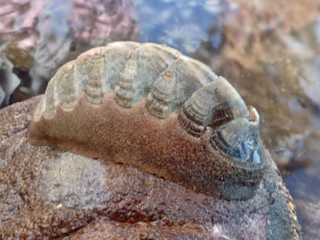
Stenoplax conspicua (conspicuous chiton)
| 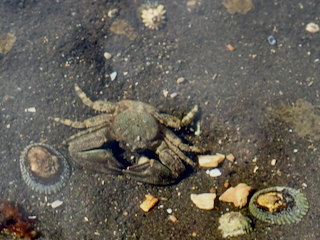
Petrolisthes cabrilloi (Cabrillo's porcelain crab)
| 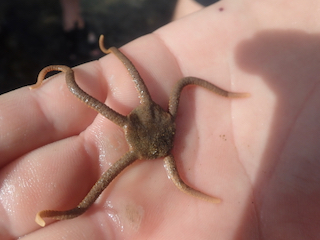
Ophioplocus esmarki (smooth brittle star) is omnivorous, whereas others might feed on plankton.
O. esmarki is a brooder, with females caring for their embryos internally.
|
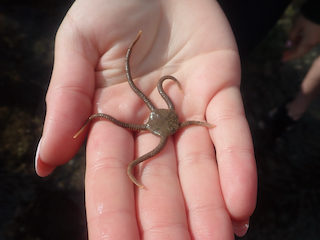
-
| 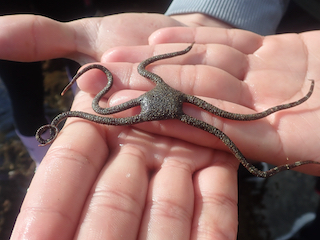
Ophioderma panamense (Panama brittle star)
| 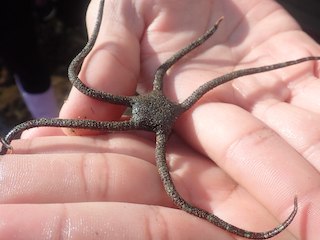
-
|
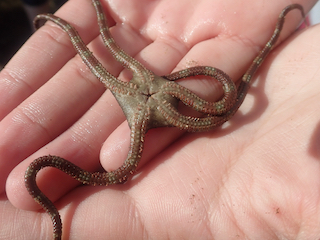
-
| 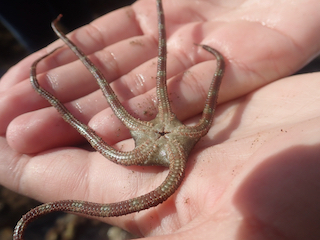
-
| 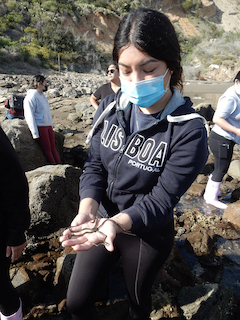
-
|
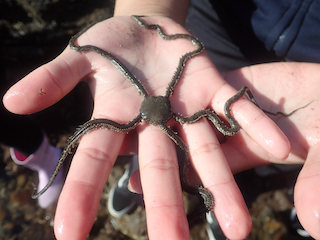
-
| 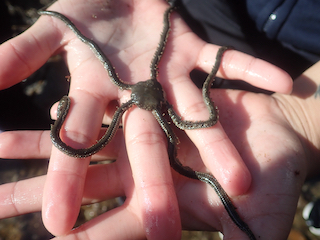
Identification uncertain, possibly a small adult of Amphiodia occidentalis (long arm brittle star
| 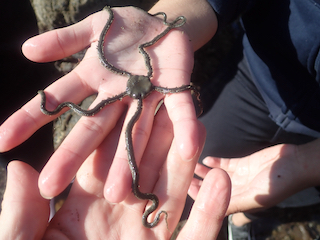
-
|
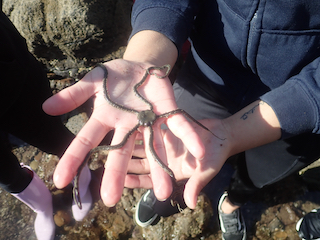
-
| 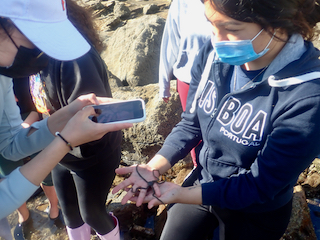
-
| 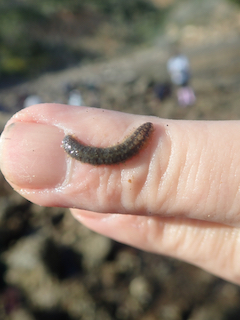
Halosydna brevisetosa (Polynoidae or scale worm family) - identification kindly provided by L. Harris, Nat. Hist. Museum of L.A. Co.
|
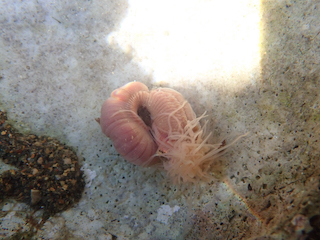
-
| 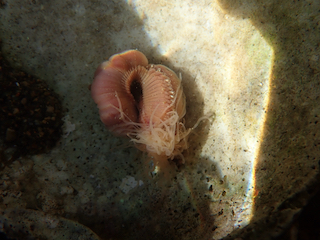
Another polychaete, but the family is Terebellidae (species identification requires microscopical examination)
| 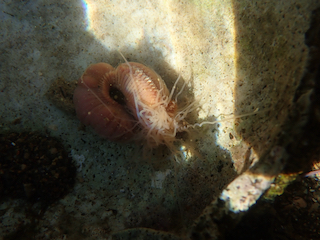
-
|
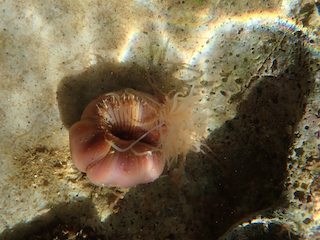
-
| 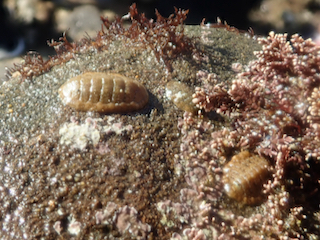
Cyanoplax keepiana (Keep's chiton)
| 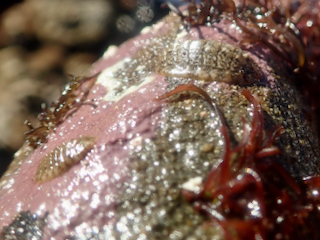
Cyanoplax keepiana (Keep's chiton)
|
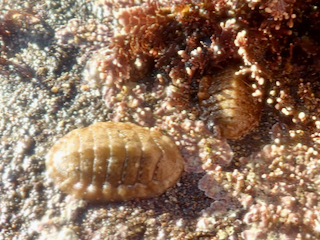
Cyanoplax keepiana (Keep's chiton)
| 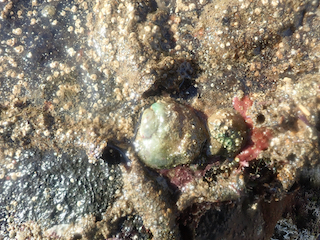
Crepipatella lingulata (Calyptraeidae) is sometimes called a half-slipper snail
| 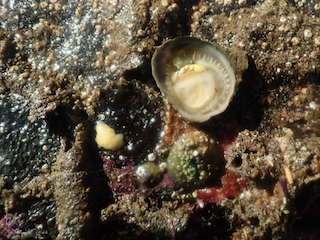
A Crepipatella lingulata (female that was brooding the yellow egg mass
|
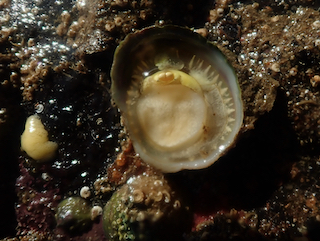
-
| 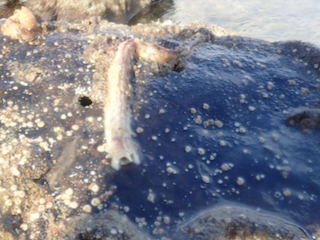
Serpula columbiana or Spirobranchus spinosus (both Serpulidae)
- identification kindly provided by L. Harris, Nat. Hist. Museum of L.A. Co.
| 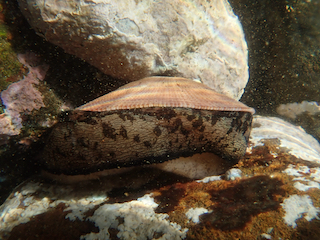
A juvenile giant keyhole limpet, Megathura crenulata (Fissurellidae)
|
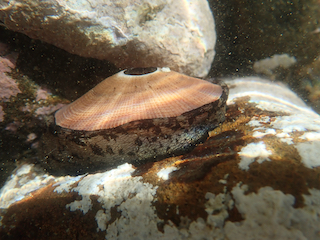
-
| 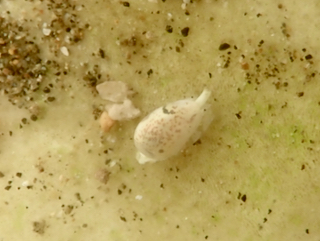
A tiny snail, Plesiocystiscus politulus or possibly the wider similar species, P. myrmecoon
(Neogastropoda: Volutoidea: Cystiscidae) - identification
courtesy of P. LaFollette, who told me that despite seeing this commonly in a preserved state, he had never seen one alive.
| 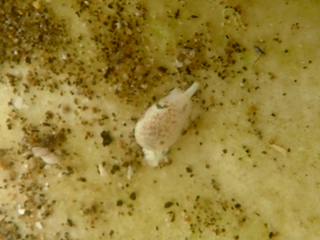
-
|
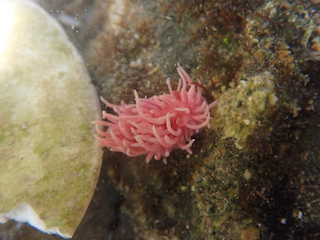
Okenia rosacea (Hopkin's Rose nudibranch)
| 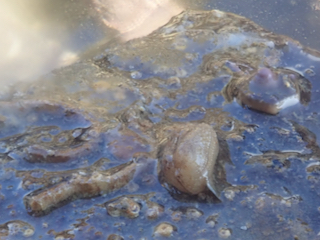
A small bivalve, Acar bailyi (Arcidae) - identification
courtesy of P. LaFollette
| 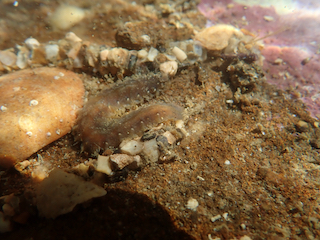
Halosydna johnsoni (Polynoidae); unlike most scale worms, the elytra are thin & translucent
- identification kindly provided by L. Harris, Nat. Hist. Museum of L.A. Co.
|
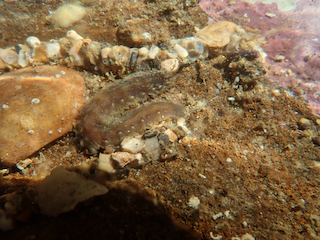
-
| 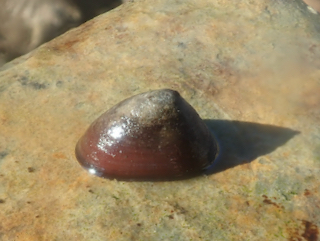
In retrospect, I was fooled by this seaweed morph of the master of limpet mimics, Lottia pelta - southern (the southern shield limpet).
In the field, I thought this was a true seaweed limpet, Lottia insessa, which is almost exclusively found on feather boa kelp (Egregia menziesii). With my former grad student,
Chrystal Johnson, we have studied how the southern shield limpet will sometimes start its life on feather boa kelp and show a remarkable resemblance to the seaweed limpet, and later in its life it moves to rocks.
Then it will begin growing the bottom part of its shell
differently more like more typical rock morph southern shield limpets (often found underneath rockweeds), and its shell will reflect its abrupt change in life style with what we call a midlife crisis morph.
The anterior slope of the southern shield limpet is straighter than that of the seaweed limpet. but they can be tricky to tell apart without sequencing. In our studies,
these two species were about 50:50 in this vicinity on feather boa kelp, whereas L. insessa dominated on sandier beaches.
Our feather boa kelp disappeared from at least the intertidal in Orange and L. A. counties
for a stretch of hot years, but seems to be making a modest recovery.
| 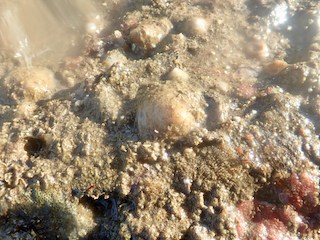
Several hoof snails (Hipponicidae), Hipponix sp. (under investigation in my lab).
|
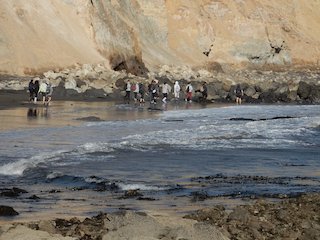
-
| 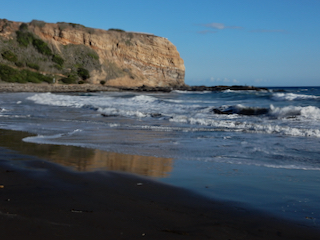
-
| 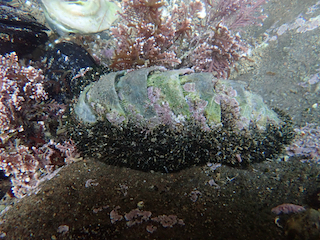
Mopalia muscosa (mossy chiton)
|
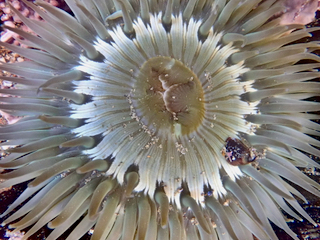
Anthopleura sola (sunburst anemone)
| 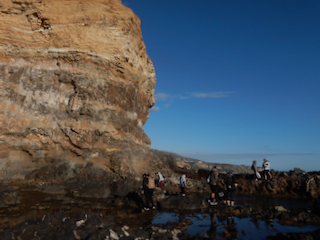
-
| 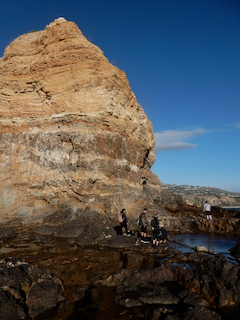
-
|
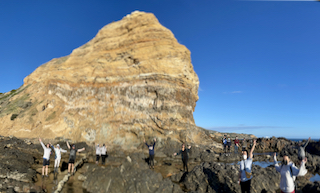
-
| 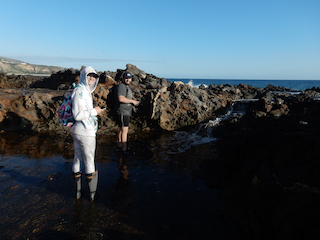
-
| 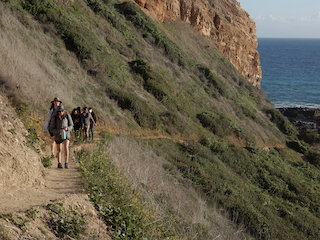
-
|
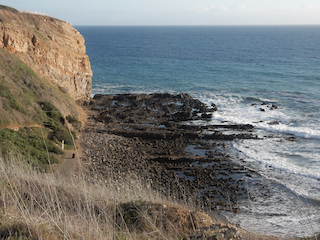
-
| 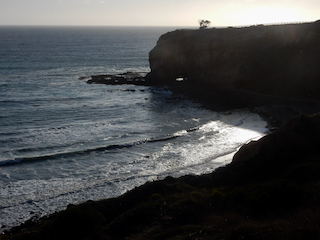
-
|
Return to Biology 317 Fieldtrip Map or Bio 317 Field Marine Biology Home Page
Web page created on 3/6/22 using ShoresToWeb HyperCard stack by D. J. Eernisse © 2005-2009
 Under Construction!
Under Construction! Under Construction!
Under Construction!